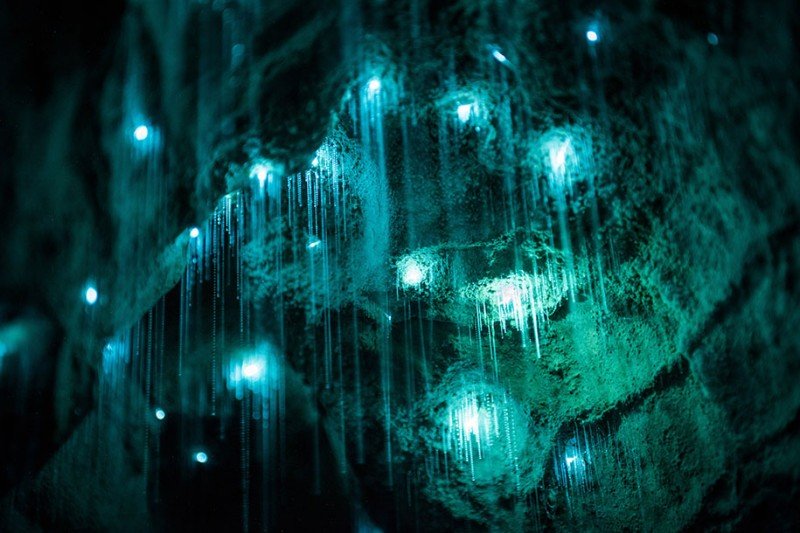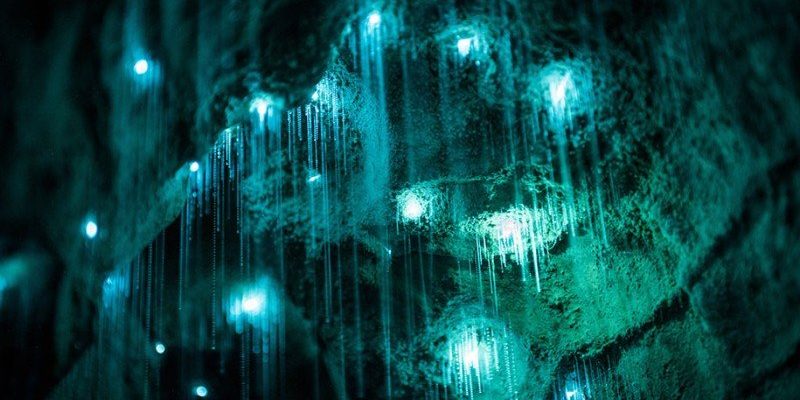
Picture a limestone cave as a cozy, well-lit room with just the right humidity. It’s often filled with drips of water and nutrients that help glow worms flourish. In contrast, think of a sandstone cave as a more rugged, less hospitable environment. While both types can host glow worms, they do so under different conditions. By understanding how these caves differ, we can appreciate the unique ecosystems that glow worms call home.
What Are Glow Worms?
Let’s start at the basics. Glow worms are actually not worms at all. They’re the larvae of certain species of insects, mainly *Lampyridae*, which are more commonly known as fireflies or lightning bugs. These larvae use their light to attract prey—usually small insects like midges or mosquitos.
Here’s the thing: glow worms produce light through a chemical reaction in their bodies. This process is called bioluminescence. When you see those twinkling lights in a cave, it’s like nature’s own light show! The glow serves two main purposes: attracting food and deterring predators. You might wonder how they manage to create such bright lights. Well, they use a chemical called luciferin, which reacts with oxygen, producing light. Neat, right?
Glow worms can be found in countries like New Zealand, Australia, and even parts of Europe. Their enchanting glow can turn a mundane cave tour into an unforgettable experience. But where they live can greatly affect their survival and population.
The Role of Limestone Caves
Limestone caves are often formed by the erosion of soluble rocks, mainly calcium carbonate. This creates a unique ecosystem that supports a variety of life forms, including glow worms. One of the key reasons glow worms thrive in limestone caves is the presence of moisture. These caves often have dripping water that provides the nutrients glow worms need to grow strong.
In limestone caves, the environment is typically stable. The temperature and humidity levels remain relatively constant, which is crucial for the glow worms. Their silk threads, which they use to catch prey, can be suspended in the moist air, allowing them to maximize their hunting. The structure of limestone caves also creates small nooks and crannies where glow worms can hide from predators, ensuring a better chance of survival.
The beauty of limestone caves doesn’t just lie in the glow worms. You might find stunning stalactites and stalagmites, making these caves a visual feast. All of these elements combine to create an ideal habitat for glow worms.
The Characteristics of Sandstone Caves
Now, let’s look at sandstone caves. Unlike limestone, sandstone is a sedimentary rock formed from compacted sand and minerals. These caves can also be beautiful but offer a different environment for glow worms. Sandstone caves are generally drier and may not provide the same nutrient-rich conditions as limestone caves.
Because of the dry environment, glow worms in sandstone caves may not thrive as well as those in limestone caves. The humidity levels can fluctuate more, posing challenges for their survival. Additionally, the harder surface of sandstone doesn’t retain moisture like limestone, which means fewer nutrients are available for glow worms.
However, this doesn’t mean glow worms can’t survive in sandstone caves at all. They’ve adapted in some ways, finding crevices and sheltered spots where the air might be a bit damper. It’s incredible how life finds a way in these rugged environments!
Comparative Habitat Conditions
So, let’s break it down. What are the main differences in habitat conditions between limestone and sandstone caves that affect glow worms? Here’s a quick comparison:
| Feature | Limestone Caves | Sandstone Caves |
|---|---|---|
| Moisture Levels | High, consistent moisture | Lower, fluctuating moisture |
| Nutrient Availability | Rich in nutrients | Limited nutrients |
| Temperature Stability | Stable and moderate | More extremes |
| Predator Protection | Variety of hiding spots | Fewer sheltered areas |
As you can see, limestone caves offer a more favorable environment for glow worms compared to sandstone caves. This is crucial for their growth and reproduction. Understanding these differences helps scientists and nature enthusiasts alike appreciate the delicate balance of cave ecosystems.
Why Glow Worms Matter
You might be wondering why we should care about glow worms and their habitats. Beyond their enchanting beauty, glow worms play a significant role in the ecosystem. They help control the populations of insects, contributing to the balance of nature. The presence or absence of glow worms can indicate the health of a cave ecosystem.
Protecting these unique environments is essential not only for glow worms but also for myriad other species that share their habitats. When limestone caves are threatened by factors like pollution or tourism, the delicate balance shifts and can have severe consequences.
In this way, glow worms serve as a reminder of the intricate connections in our natural world. They’re more than just pretty lights; they are an integral part of the ecosystem.
Experiencing Glow Worms
If you ever get a chance to visit a cave with glow worms, take it! Many locations, especially in New Zealand and Australia, offer guided tours. These tours can provide insights you might miss while exploring on your own.
When visiting, be respectful. Flash photography can disturb these delicate creatures and alter their natural behaviors. Instead, embrace the magic of the moment and let the glow take you to another world.
Just imagine standing in a cave, surrounded by darkness, with thousands of tiny lights flickering above you. It’s truly unforgettable!
In the end, whether you’re exploring limestone or sandstone caves, the experience is bound to be magical. Glow worms illuminate the mysteries of the dark, revealing a hidden world that’s both beautiful and delicate. Understanding the differences between these habitats allows us to appreciate the remarkable adaptations of glow worms and the ecosystems they inhabit.
So, the next time you find yourself in a cave, take a moment to look up and wonder: How do these tiny creatures light up the dark? And more importantly, how can we help protect their homes for generations to come? It’s a simple question that opens up a world of possibilities!

